The main components Part of Car Engine engine include the engine block (cylinder block), combustion chamber, cylinder head, pistons, crankshaft, camshaft, timing chain, valve train, valves, rocker arms, pushrods/lifters, fuel injectors, and spark plugs. The engine block serves as the foundation, while the crankshaft converts piston motion into rotational force.
The camshaft controls valve timing, ensuring proper engine function. These parts work together harmoniously to power the vehicle efficiently and effectively. Understanding the role of each component is crucial for maintaining and optimizing engine performance.

Credit: www.sunautoservice.com
Table of Contents
The Heart Of The Vehicle: An Introduction To Part of Car Engine Explained: Essential Components Unveiled Engines
The Heart of the Vehicle: An Introduction to Car Engines
Diving Into The Basics
Understanding the basic components of a car engine is essential for every vehicle owner. The engine is the heart of the vehicle, responsible for powering the car and propelling it forward. In this section, we will delve into the fundamental elements that make up a car engine, demystifying its workings and shedding light on its intricate mechanisms.
How Does A Car Engine Work?
A car engine is a complex assembly of various parts that work together to generate power. The engine operates through a series of controlled explosions in the combustion chamber, converting fuel into energy. This energy is then transmitted to the wheels, propelling the vehicle forward. Understanding the functioning of each component is crucial to grasp the mechanics of a car engine.
One of the vital components of a car engine is the engine block (cylinder block), which houses the cylinders and other crucial parts. The combustion chamber is where the fuel is ignited, generating the power needed to move the vehicle. The cylinder head is mounted on top of the engine block and contains the valves and spark plugs. The pistons move up and down within the cylinders, driving the engine’s operation. The crankshaft converts the reciprocating motion of the pistons into rotational motion, while the camshaft controls the opening and closing of the engine’s valves.
The Foundation: Exploring The Engine Block And Cylinders
Explore the foundation of a car engine with a focus on the engine block and cylinders. Learn about the key components that make up these essential parts of the engine, including the combustion chamber, pistons, crankshaft, camshaft, and more.
The engine block and cylinders are the foundation of any car engine. The engine block is essentially the main part of the engine that houses all other components, and the cylinders are where combustion takes place. In this section, we’ll explore the material and design of engine blocks and cylinders, as well as their core functions and importance.
Material And Design
The material used to construct engine blocks and cylinders is typically cast iron or aluminum alloy. Cast iron is known for its durability and resistance to wear, while aluminum is lighter and provides better heat dissipation. The design of engine blocks and cylinders is crucial to their performance. The shape and size of the cylinders determine the engine’s displacement, which affects its power and torque output. The placement and orientation of cylinders can also vary, with most engines having either inline or V-shaped configurations.
Core Functions And Importance
The engine block and cylinders play a vital role in the functioning of a car engine. The engine block houses the crankshaft, which is responsible for converting the up and down motion of the pistons into rotational motion that drives the wheels. The cylinders contain the pistons, which move up and down to create the pressure needed for combustion.
The combustion process generates energy that is used to power the car. Without a sturdy engine block and well-designed cylinders, the engine would not be able to function properly or efficiently. In summary, the engine block and cylinders are the foundation of any car engine. Their material and design, as well as their core functions and importance, are crucial to the engine’s performance and efficiency.
Pistons: The Power Generators
Pistons: The Power Generators, a crucial part of a car engine, work within the engine block and cylinders to generate power through combustion, making them essential for the overall functioning of the vehicle.
In the realm of car engines, pistons play a crucial role as the power generators. These small but mighty components are responsible for converting the energy produced by the combustion process into mechanical motion, propelling your vehicle forward with remarkable force. Let’s delve into the movement and mechanics of pistons, as well as their vital role in engine performance.
Movement And Mechanics
The movement of pistons can be best described as a reciprocating motion. They move up and down within the cylinders of the engine block, creating the necessary force to drive the crankshaft. This motion is made possible by the combustion of fuel and air mixture in the combustion chamber.
Each piston is connected to the crankshaft through a connecting rod. As the fuel-air mixture ignites, it rapidly expands, creating a high-pressure environment inside the combustion chamber. This pressure pushes the piston downward, transferring the energy to the connecting rod and subsequently to the crankshaft.
Once the piston reaches the bottom of its stroke, it changes direction and starts moving upward. This upward motion compresses the fuel-air mixture in the combustion chamber, preparing it for the next combustion cycle. This continuous reciprocating motion of the pistons is what drives the engine’s mechanical power.
Role In Engine Performance
The role of pistons in engine performance cannot be overstated. They are not only responsible for generating power but also contribute to the overall efficiency and smooth operation of the engine.
Pistons, along with the cylinder head and the combustion chamber, determine the compression ratio of the engine. The compression ratio plays a vital role in the engine’s power output, fuel efficiency, and emissions. Higher compression ratios lead to greater power but also require higher-octane fuel to prevent knocking.
Additionally, pistons contribute to the engine’s durability and longevity. They are subjected to extreme temperatures and pressures during the combustion process, making their material composition and design crucial. Modern pistons are often made from lightweight alloys that can withstand the intense heat and stress without deforming or failing.
In conclusion, pistons are the power generators of a car engine, converting the energy from combustion into mechanical motion. Their movement and mechanics, along with their role in engine performance, make them an integral part of the overall functioning and efficiency of the engine.
Crankshaft: Converting Motion
In the intricate workings of a car engine, the crankshaft plays a crucial role in converting linear motion into rotational motion. It is responsible for the smooth and efficient operation of the engine, ensuring that power is transmitted from the pistons to the drivetrain.
Operational Dynamics
The crankshaft operates on the principle of reciprocating motion, converting the up and down movement of the pistons into the rotational motion needed to drive the wheels. This process involves a series of complex interactions between various engine components.
The crankshaft is connected to the pistons through connecting rods, which are attached to the crankshaft journals. As the pistons move up and down in the cylinders, they exert force on the connecting rods, causing the crankshaft to rotate.
This rotational motion is then transmitted to the drivetrain through the flywheel, which is connected to the crankshaft. The flywheel acts as a momentum storage device, smoothing out the power delivery and providing rotational inertia to keep the engine running smoothly.
Connection To Pistons
The connection between the crankshaft and the pistons is crucial for the efficient operation of the engine. The pistons move in a synchronized manner, with each piston reaching the top dead center (TDC) and bottom dead center (BDC) at specific intervals.
The crankshaft journals, which are located at regular intervals along the length of the crankshaft, provide the connection points for the connecting rods. These journals are precisely machined to ensure a smooth and precise movement of the pistons.
As the pistons move up and down, the connecting rods exert force on the crankshaft, causing it to rotate. This rotational motion is then transmitted to the drivetrain, resulting in the movement of the vehicle.
The design and construction of the crankshaft are critical factors in ensuring the smooth operation of the engine. It must be strong enough to withstand the forces exerted by the pistons, yet lightweight enough to minimize friction and maximize efficiency.
Camshaft: Timing And Precision
The camshaft plays a crucial role in the operation of a car engine, ensuring precise timing and coordination of various components.
Controlling Valve Operations
The camshaft controls the opening and closing of the engine’s valves, regulating the intake of air and fuel and the expulsion of exhaust gases.
Impact On Engine Efficiency
The precise timing of the camshaft impacts the engine’s efficiency by optimizing the combustion process and overall performance.
Cylinder Head: Sealing The Combustion Chamber
The cylinder head is a crucial part of a car engine, as it seals the combustion chamber. It works in conjunction with the engine block, pistons, and other components to ensure proper engine function.
The cylinder head is an essential part of a car engine that seals the combustion chamber. It is responsible for housing the valves, spark plugs, and fuel injectors. The cylinder head is located at the top of the engine block, and it helps to create the combustion process that powers the vehicle. In this section, we will discuss the components and assembly of the cylinder head and its influence on engine output.
Components And Assembly
The cylinder head is made up of several components that are assembled together to create a sealed combustion chamber. These components include the valves, valve springs, rocker arms, pushrods, lifters, and the cylinder head gasket. The valves control the flow of air and fuel into the combustion chamber, and the valve springs keep them closed when necessary.
The rocker arms, pushrods, and lifters work together to open and close the valves, while the cylinder head gasket ensures that the combustion chamber is sealed.
Influence On Engine Output
The cylinder head plays a crucial role in determining the engine’s output. The shape and size of the combustion chamber, as well as the positioning of the valves, can significantly affect the engine’s performance. A well-designed cylinder head can increase the engine’s horsepower and torque, while a poorly designed one can decrease it.
The cylinder head also affects the engine’s efficiency and emissions. A properly designed cylinder head can improve fuel economy and reduce emissions, while a poorly designed one can increase fuel consumption and emissions. In conclusion, the cylinder head is a critical component of a car engine that seals the combustion chamber. It is made up of several components that work together to create a sealed combustion chamber.
The cylinder head’s design significantly influences the engine’s output, including its horsepower, torque, efficiency, and emissions. Therefore, it is essential to ensure that the cylinder head is properly designed and assembled to maximize the engine’s performance.
Valve Train Components: The Unsung Heroes
When we talk about car engines, the spotlight often falls on the more well-known components such as the pistons and crankshaft. However, the valve train components play an equally crucial role in ensuring the engine’s performance and efficiency. Let’s delve into the unsung heroes of the valve train and explore the functions and timing of valves, pushrods, and rocker arms.
Valves
Valves are pivotal in the engine’s operation, controlling the intake of air and fuel as well as the expulsion of exhaust gases. The intake valves open to allow the air-fuel mixture to enter the combustion chamber, while the exhaust valves open to release the burnt gases. The timing of these valves is precisely coordinated with the engine’s rotation to optimize performance.
Pushrods
Pushrods are slender rods that transmit the motion from the camshaft to the rocker arms within the engine. This transfer of motion is crucial for the precise timing and movement of the valves, ensuring the efficient operation of the engine.
Rocker Arms
Rocker arms play a vital role in converting the linear motion from the pushrods into the rotary motion required to open and close the valves. Their precise movement and coordination with the camshaft and pushrods are essential for the smooth and efficient operation of the engine’s valve train.
These valve train components work harmoniously to ensure the precise timing and functionality of the valves, playing a significant role in the overall performance of the engine.
Timing Mechanisms: Synchronizing The Engine
The timing mechanisms in a car engine play a crucial role in synchronizing the various components to ensure smooth and efficient operation. Proper synchronization of the engine’s internal parts is essential for optimal performance and longevity.
Timing Chain Vs. Belt
One of the key components of the timing mechanism is the timing chain or belt. Both are responsible for synchronizing the rotation of the crankshaft and camshaft, ensuring that the engine’s valves open and close at the right time during the intake and exhaust strokes.
Ensuring Smooth Operation
Smooth operation of the timing mechanism is vital to prevent any potential damage to the engine. Regular maintenance and timely replacement of timing belts or chains are essential to avoid catastrophic engine failure. It’s important to adhere to the manufacturer’s recommended maintenance schedule to ensure the proper functioning of these crucial components.
The Lubrication System: Protecting Engine Parts
The lubrication system is a crucial part of the car engine, protecting its components from friction and wear. It ensures smooth operation by providing oil to the engine block, pistons, and other moving parts, extending the engine’s lifespan and performance.
Regular maintenance of this system is essential for the overall health of the car.
The Lubrication System: Protecting Engine Parts The lubrication system is an essential part of any car engine. It helps to protect the engine parts from wear and tear by ensuring that the engine is well-lubricated. Without proper lubrication, the engine’s moving parts would grind against each other, causing damage and eventually leading to engine failure.
Oil Flow and Engine Health The oil flow in the engine is critical to its overall health. The oil pump sends oil to the engine’s moving parts, which lubricates them and reduces friction. This reduces the amount of heat generated by the engine, which in turn helps to prevent overheating. Proper oil flow is necessary for the engine to perform optimally and to last longer.
Components of the System The lubrication system is made up of several components, including the oil pump, oil filter, oil pan, and oil cooler. The oil pump is responsible for pumping oil through the system and to the engine’s moving parts. The oil filter helps to remove impurities from the oil, ensuring that it is clean and free from contaminants. The oil pan collects the oil that has passed through the engine and sends it back to the oil pump for re-circulation. The oil cooler helps to regulate the temperature of the oil, ensuring that it does not get too hot.
In conclusion, the lubrication system is crucial to the health of any car engine. It helps to protect the engine parts from wear and tear and ensures that the engine runs smoothly and efficiently. It is essential to maintain the lubrication system regularly, including changing the oil and oil filter, to ensure that the engine continues to perform optimally.

Credit: www.ebay.com
Ignition System: Sparking Movement
The ignition system in a car engine plays a crucial role in sparking movement and initiating the combustion process. Two key components of the ignition system are spark plugs and ignition timing.
Spark Plugs
Spark plugs are essential components that generate the spark needed to ignite the air-fuel mixture in the combustion chamber. They are responsible for creating the controlled explosion that powers the engine.
Ignition Timing
Ignition timing refers to the precise moment when the spark plug fires to ignite the air-fuel mixture. Proper ignition timing ensures optimal engine performance and efficiency.
Role In Engine Start-up
The ignition system’s primary role during engine start-up is to generate the spark necessary to kickstart the combustion process. Without a functioning ignition system, the engine would fail to start.

Credit: sunwayautoparts.com
Frequently Asked Questions
What Are The Engine 10 Parts Called?
The ten main parts of a car engine are the engine block, cylinder head, pistons, crankshaft, camshaft, timing chain, valve train, valves, rocker arms, and fuel injectors.
What Are The 30 Basic Parts Of The Engine?
The 30 basic parts of an engine include the engine block, combustion chamber, cylinder head, pistons, crankshaft, camshaft, timing chain, valve train, valves, rocker arms, pushrods/lifters, fuel injectors, and spark plugs.
What Are 3 Engine Parts?
The three engine parts are the engine block, cylinder head, and pistons. These components are essential for the engine’s functionality.
What Is Included In A Car Engine?
A car engine includes the engine block, combustion chamber, cylinder head, pistons, crankshaft, camshaft, timing chain, valves, and more.
Conclusion
Understanding the key components of a car engine is crucial for vehicle maintenance and performance. From the engine block to the crankshaft and camshaft, each part plays a vital role in powering your vehicle. By knowing these components, you can better appreciate the intricate workings of your car’s engine.





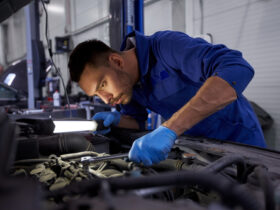




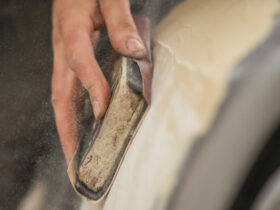
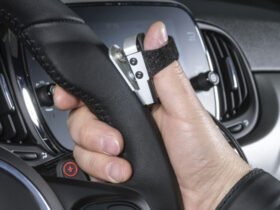
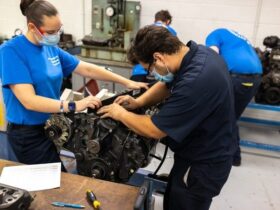

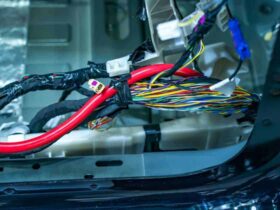

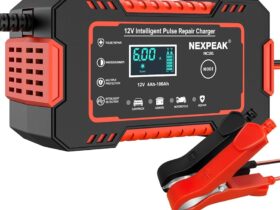


Leave a Reply